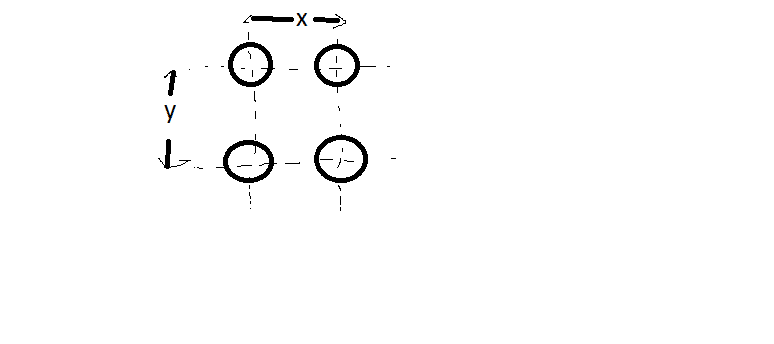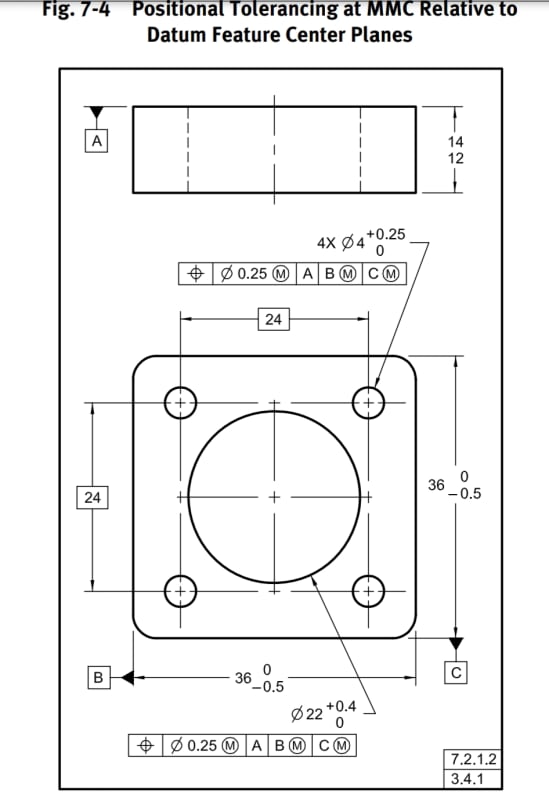Bguarino
Mechanical
- Sep 3, 2019
- 2
I have a drawing that references ASME 14.5 for interpretation. On this drawing is shown 4 holes that form a "square" shape, and dotted lines connect the 4 holes. There is one dimension for the width and one for the height.

How many measurements should an inspector record? The engineer who created the drawing says there should be 4 measurements because of the dotted lines. However in ASME 14.5 it states that patterns should be clearly marked with "nX" (or similiar). He says the dotted lines indicate the dimensions extend across to the other holes meaning they need to be inspected as well, and is refusing to place a 2X in front of the dimensions.
I do not believe the intent is clear. And side note- I also do not think dimensioning it this way ensures the holes are in the correct positions nor aligned at 90 degrees to each other. GD&T should be used?
What is correct?

How many measurements should an inspector record? The engineer who created the drawing says there should be 4 measurements because of the dotted lines. However in ASME 14.5 it states that patterns should be clearly marked with "nX" (or similiar). He says the dotted lines indicate the dimensions extend across to the other holes meaning they need to be inspected as well, and is refusing to place a 2X in front of the dimensions.
I do not believe the intent is clear. And side note- I also do not think dimensioning it this way ensures the holes are in the correct positions nor aligned at 90 degrees to each other. GD&T should be used?
What is correct?


